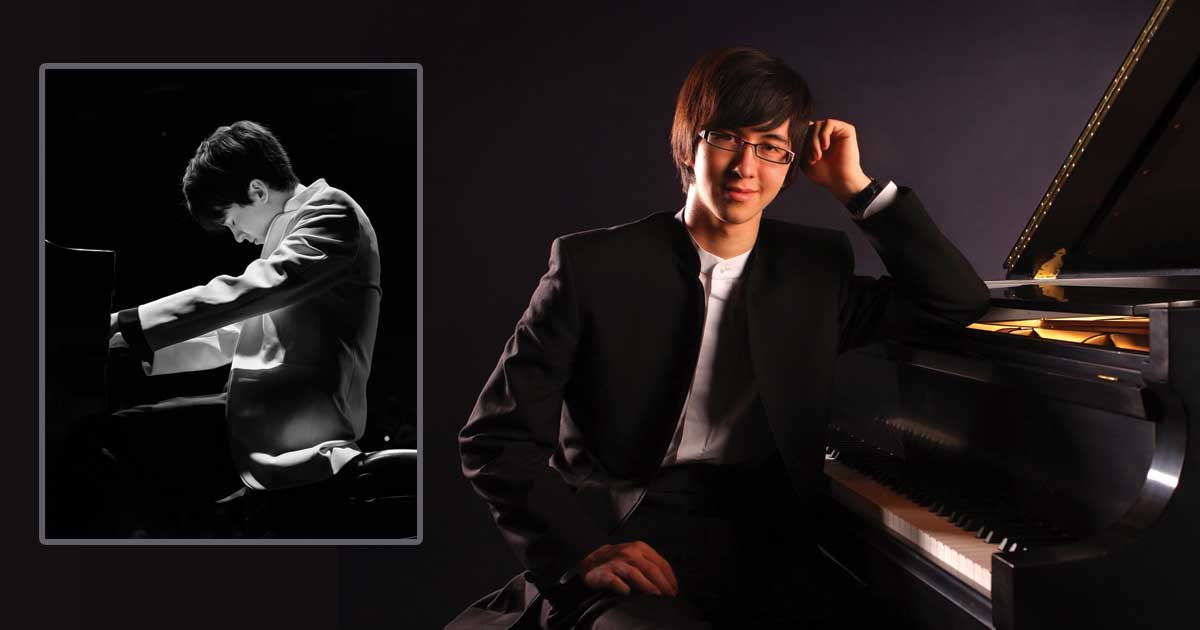
About
An American superstar. Praised by The New York Times for his “jaw-dropping technique and virtuosity meshed with a distinctive musicality,” Albright has performed with artists such as Bobby McFerrin, Joshua Bell, and Yo-Yo Ma. He is widely respected as a pianist and also as a composer and a musician with a gift for improvisation.
Recipient of the prestigious 2014 Avery Fisher Career Grant and 2010 Gilmore Young Artist Award, Albright also won the 2014 Ruhr Klavier Festival Young Artist Award and the 2009 Young Concert Artists International Auditions.
Albright was the first classical pianist accepted to the Harvard/New England Conservatory five-year BA/MM program. He was a pre-med major and completed his bachelor’s in economics in 2011 and a master’s in piano performance in 2012. He graduated with the Artist Diploma from Juilliard in 2014. He is an official Steinway Artist.
Albright’s debut recording, Vivace, has sold thousands of copies worldwide. He released the first of a three-part series of live, all-Schubert recordings in 2017. A sought-after teacher, Mr. Albright will be speaking at a pre-concert lecture at 6:45 and available afterward to meet with patrons.
Program
- Adagio sostenuto
- Allegretto
- Presto agitato
Program Notes
After establishing his mastery of the classical forms inherited from his predecessors, Beethoven embarked on a series of increasingly innovative sonatas. His title for each of the two works of Opus 27, Sonata quasi una fantasia, drew attention to their improvisatory character.
Op. 27, No. 2, completed in 1801, begins with a slow movement in A-B-A form rather than the customary Allegro in sonata form. The alla breve time signature suggests a somewhat faster pace than implied by the “Adagio sostenuto” tempo indication. Beethoven instructed that the movement be played with the pedal depressed throughout, accounting in part for its nocturnal and ghostly character. In 1832, the poet Ludwig Rellstab remarked that the movement reminded him of the moonlight on Lake Lucerne; the unofficial title, the Moonlight, has adhered to the work ever since. The second movement is a cheerful scherzo and trio in D-flat, a calm before the fiery storm of the third movement, the weightiest and most virtuosic of the three.
The sonata influenced Chopin’s Fantaisie-Impromptu, which manifests the same key relationships, tempo changes, and chordal structure; its rapid passagework resembles that of the sonata’s third movement. The Moonlight was already very popular in Beethoven’s day, exasperating the composer, who remarked to Czerny, “They are always talking about the C#-minor sonata—surely I’ve written better things.” More than 200 years later, it remains one of the composer’s best-known and most beloved works.
Menotti, best remembered today for Amahl and the Night Visitors, composed the Ricercare and Toccata in 1951 on a theme from his opera, The Old Maid and the Thief, written 12 years earlier. Ricercare in the late Renaissance and early Baroque were improvisatory preludes; much like toccatas, they featured contrasting sections that provided opportunity for virtuosic display. The term later came to mean a learned and contrapuntal work; in that sense, ricercare were precursors to the fugue.
The work begins with the contrapuntal exposition of a short theme that is sprightly and staccato in the opera, but Menotti slows the theme to an Andante and marks it legato. The movement at first exhibits a subdued and modal character before developing expansively through various transformations. A cadenza in thirty-second notes recalls the passagework of earlier ricercare. The last bars are marked by a pedal-point D under a dissonant, chromatic descent; the movement comes to rest on a quiet D-major chord. The ensuing neoclassical and imitative toccata casts the theme in its original humorous staccato. The movement features nonstop sixteenth notes until, after a final ascent in thirds, it concludes with a quiet G-major cadence.
Variations on “Là ci darem la mano,” composed when Chopin was 17, bears the distinction of being the young composer’s first work to attract international attention. Premiered at one of Chopin’s debut concerts in Vienna in 1829, the work inspired Schumann, in a review in the Allgemeine musikalische Zeitung, to pronounce his now-famous phrase: “Hats off gentlemen! A genius!” Though originally for piano and orchestra, like the later Grande polonaise brillante, the work can be performed on solo piano, the orchestra serving as little more than accompaniment to the brilliant piano writing.
Though the work largely conforms to the virtuoso piano style of the 1820s, it displays original features that became hallmarks of Chopin’s mature style, especially its delicate and ornamented passagework and its tendency towards chromatic harmony and sudden modulations. After a lyrical and improvisatory introduction, the main theme, which originated in the act-one duet of Don Giovanni and Zerlina in Mozart’s Don Giovanni, is presented. The theme is followed by five variations in conventional postclassical virtuoso idioms, including a dramatic recitative in the parallel minor, before the work concludes with a spirited Alla Polacca. The theme was later used by Liszt in his Réminiscences de Don Juan.
of Johann Strauss
Schulz-Evler, a Polish-born composer of virtuosic arrangements of popular works, is remembered primarily for his Arabesques on Themes from “On the Beautiful Blue Danube” of Johann Strauss. Owing to their immense popularity at the time, the waltzes of Strauss were a frequent basis for paraphrases, inspiring compositions by renowned pianists such as Carl Tausig, Moriz Rosenthal, and Leopold Godowsky. Schulz-Evler’s Arabesques, with its introduction, five variations, and coda, is a work of dazzling virtuosity, sure to delight.